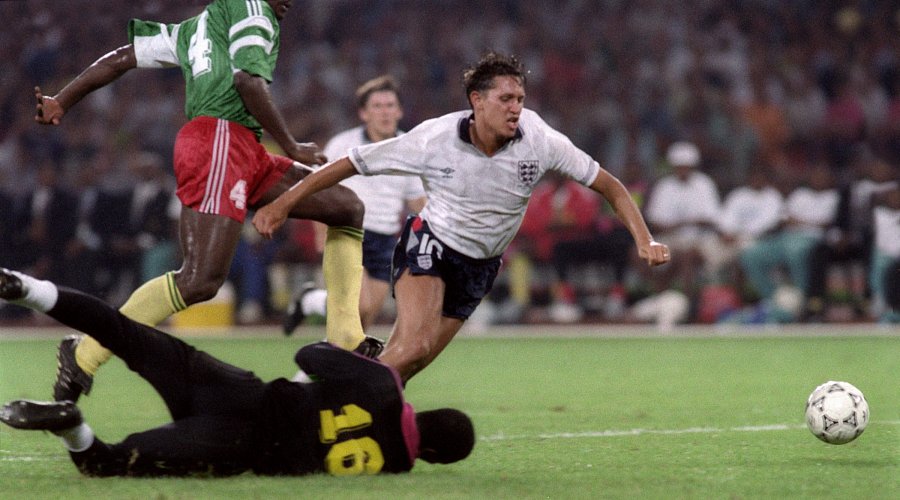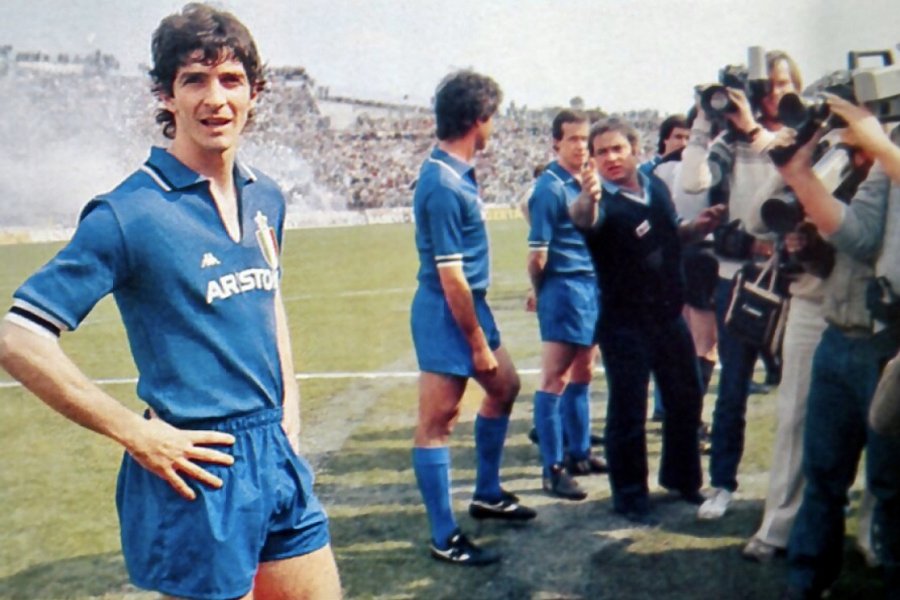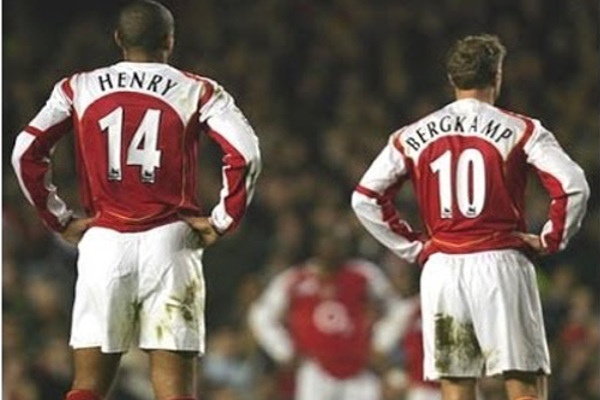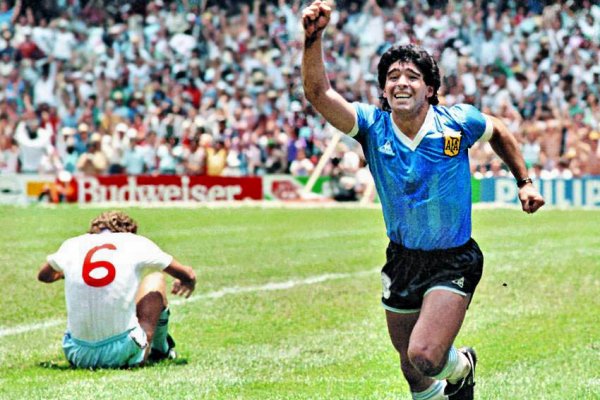Great Goal Poachers
The definition of a goal-poacher? In our eyes, it's got to be a player who, if they had no decent service at all, probably wouldn't come anywhere near to scoring a goal, so we wouldn't include the likes of Messi or Ronaldo in our list because, despite phenomenal scoring rates, they're capable of dropping deep to get the ball, beating a couple of defenders and then lashing one home from anywhere. Nor do we have room in our list for a giant traditional number nine, piling through the defence like a rampaging bull. We'll look at other great strikers elsewhere on the site, here we're talking about players who didn't like to leave the six yard box if they could help it, forwards who might get a runny nose if they were no longer in sight of goal or if found themselves outside the penalty area. The sort of players who, in the greatest goalmouth scrambles, would undoubtedly end up knocking the ball in.
Anyway, goal poachers, goal-hangers, penalty-box players. Call them what you like, the best ones had the knack of being in exactly the right place, at the right time, to score that all important goal. Here are ten of our favourites...
No.1 Gerd Müller West Germany
Where else to start but the ultimate goal-poacher, the legendary Gerd Müller. Looking at the German, with his short, stocky appearance, complete with enormous thighs, you wouldn't expect him to be particularly mobile, yet that was his main physical asset. His speed off the mark and over short distances, his lightning quick turns and movement, coupled with a natural instinct to be in the right place at the right time, made him football's greatest six-yard box predator. Müller was a phenomenal goal scorer - any time the ball was near him in the box it spelt danger. He seemed to score so many goals in the penalty area where he had his back to goal, spinning quickly to lose his marker and making an opportunity for himself, which more often than not he would score with.
During his fifteen years with Bayern Munich his scoring rate was incredible, he was the Bundesliga top scorer for seven seasons and nearly reached a ratio of a goal per game in over 600 matches for the Bavarian giants, helping them to four Bundesliga titles and three European Cup triumphs. His record at international level was even better, scoring 68 goals in 62 appearances, and he was a key part of the teams that won the 1972 European Championships and the 1974 World Cup. World Cup balls hitting the back of the net were his particular speciality - he scored 14 goals in just two tournaments, Mexico 1970 and West Germany 1974, which was a record until Ronaldo broke it in 2006.
Gerd Müller's Clubs: 1861 Nördlingen, Bayern Munich, Fort Lauderdale Strikers.
No.2 Gary Lineker England

Gary Lineker, playing against Cameroon at Italia '90.
Photo: Wikimedia Commons
One of the greatest strikers of the 1980s and early 1990s, Gary Lineker scored goals at all of the clubs he played for, with the exception of an injury plagued-finale at Nagoya Grampus Eight.
Like many in the list of great goal poachers, Lineker wasn't a highly technical player, he was unlikely to skip past players with a drop of the shoulder or a couple of step-overs, but what he did have was a fantastic ability to read the game, a natural knack of being in the right place at the right time, and above all a great coolness in front of goal and a finishing ability second to none.
Lineker first started banging the goals in for hometown club Leicester City in the early 80s, and was soon regularly reaching the 20 goals a season mark. A great campaign in 1985-86 saw Lineker reach the 30 goals mark with Everton, winning the league in the process, and then topping it by claiming the World Cup Golden Shoe at Mexico ‘86 as the tournament's top scorer with six goals. That led to a move to Barcelona and two great seasons there, banging the goals in at the Camp Nou until Johan Cruyff took over and decided it would be a good idea to play him on the right wing. Having returned to England with Tottenham Hotspur, he became the league's top scorer again, thus becoming the only player in England to have topped the scoring charts with three separate clubs, Leicester City, Everton and Tottenham Hotspur.
Gary Lineker's Clubs: Leicester City, Everton, Barcelona, Tottenham Hotspur, Nagoya Grampus Eight.
No.3 Paolo Rossi Italy
Unlike many traditional centre forwards, Paolo Rossi lacked a physical presence and had a very slight build, but he was quick off the mark, agile and had razor-sharp reactions. And as with all great poachers, Paolo Rossi had an eye for goal and a natural ability to read the game and to anticipate where best to position himself for goal scoring opportunities.
Unlike many goal poachers, Rossi actually started out as a winger, at Vicenza in the mid 1970s. It was down to a team-mate's injury that he got moved into a central position but it soon turned into something of a master-stroke - Rossi suddenly finding himself topping the scoring charts for Serie B in 1977, before doing exactly the same in Serie A the following year, 1977-78, and winning the Capocannoniere award. This domestic form saw Rossi named in the Italian squad for the Argentina '78 World Cup, an opportunity which he grabbed fully, scoring three goals and being named as the tournament's second best player, behind Mario Kempes. Four years later at Espana '82 he would go one better than this, not only being named the player of the tournament but also claiming the Golden Boot as the tournament's top scorer with six goals, three of them in that epic encounter with Brazil.
In between these two World Cup tournaments, Rossi had to actually sit out the Europa '80 European Championships, on home soil, as he'd been banned for two years as part of the Totonero match-fixing scandal. Yet despite this controversy, it's his goalscoring exploits leading the Azzurri to World Cup glory in 1982 for which he's best remembered.
Paolo Rossi's Clubs: Juventus, Como, Vicenza, Perugia, Milan, Hellas Verona.
No.4 Filippo Inzaghi Italy
When it comes to professional goal-hangers, "Pippo" was one of the best. He was often criticised for not bringing much else to his teams, but that didn't worry fans of the likes of Atalanta, Juventus and Milan, as long as he kept on scoring for them.
Despite only having a slight build, Inzaghi had a bit of pace about him, and used it to great effect playing on the shoulder of the last defender, often timing his runs to perfection to just beat the offside traps. What he lacked in technical skills he more than made up for in his positional play, awareness, anticipation and finishing.
Inzaghi's reputation led to some great quotes, Johan Cruyff once saying "Look, he can't actually play football at all. He's just always in the right position", whilst Sir Alex Ferguson came up with the classic line, "That lad must have been born offside".
Filippo Inzaghi's Clubs: Piacenza, Albino Leffe, Hellas Verona, Parma, Atalanta, Juventus, Milan.
No.5 Miroslav Klose Germany
It's extremely rare for a footballer to be more prolific at international level than club level, but Miroslav Klose was that man. His international goalscoring record was nothing short of phenomenal, not only did he break Gerd Muller's record and become Germany's top scorer (his 71 goals surpassing Muller's 68), but he also broke the hearts of football romantics across the globe in 2014 when he knocked the great Ronaldo off his perch to become the World Cup's all-time top-scorer, his two goals during the tournament taking him to 16 goals, one more than the Brazilian.
The rest of the footballing world were certainly relieved to hear that Klose was retiring from international football after that 2014 tournament - not only did he hang his boots up with those two great individual records, but he could also lay claim to the fact Germany never lost a game in which Klose had scored! An incredible statistic for a player who played 137 times for Die Mannschaft.
Physically and technically, Klose had a bit of everything to make him a great poacher - an accurate finisher, great movement in the penalty area, and great positional sense. He also had a great knack of getting on the end of crosses with his head. Whilst his goalscoring stats at club level weren't quite up to those when he played for the national team, he still found the net regularly in the Bundesliga with 1. FC Kaiserslautern and Werder Bremen before eventually succumbing to the lure of Bayern Munich. At the age of 33, Klose would prove that he could also score goals in another league, moving to Lazio on a free transfer and continuing to score regularly in Serie A up until the age of 38.
Miroslav Klose's Clubs: FC 08 Homburg, 1. FC Kaiserslautern, Werder Bremen, Bayern Munich, Lazio.
No.6 Ian Rush Wales
A master finisher, we're not sure what percentage of Ian Rush's shots were slotted into the bottom corner, but it seemed to be nearly every one. Born in north Wales, Rush started his career at nearby Chester City before moving to Liverpool in 1980 and quickly becoming a key part of their success in an era that saw them win almost everything going. Loitering on the shoulder of the last defender, then drifting off into a bit of space for the likes of Dalglish, Mølby and Whelan to find him, from which point more often than not he'd invariably find the back of the net. Rush was unlikely to drop his shoulder and twist and turn his way past three or four defenders, but in the penalty area or six yard box there was simply no one better, and his goalscoring record for Liverpool before his move to Juventus said it all - 207 league and cup goals in six seasons. Phenomenal.
His move to Turin in 1986-87 didn't work out as well as he'd hoped though, scoring 7 goals in 29 Serie A matches as he struggled to adapt to the Italian game. So, after just one season at the Stadio Comunale, he returned to Anfield, Juventus cutting their losses and selling him back to Liverpool for £2.7m, a £500k loss on what they'd paid for him. He would carry on scoring goals at Anfield until the end of the 1996 season though, and at the end of his career with the Reds he'd amassed 346 goals in 660 matches, making him undoubtedly one of Liverpool's goalscoring greats. He also had a pretty decent haul of silverware, including two European Cup, five First Divisions, three FA Cups and five League Cup winners medals. Individually, he also won the European football Golden Shoe award in the 1983-84 season, after scoring 32 goals.
Ian Rush's Clubs: Chester City, Liverpool, Juventus, Leeds United, Newcastle United, Sheffield United, Wrexham, Sydney Olympic.
No.7 Hakan Sukur Turkey
Part of the wave of fine Turkish footballers in the 1990s who swept along the national team and the big three domestic clubs, transforming them into genuine international contenders.
Whilst Šuker struggled to settle each time he tried his luck abroad, his goals kept flowing during his three spells with Galatasaray, particularly the middle spell from 1995 to 2000 when he scored more than 150 goals in just over 200 matches.
Whilst Šuker was tall, standing at six foot three, he wasn't a traditional target man and you wouldn't find Turkey or Galatasaray pumping long balls up to him looking for him to nod them on. What Šuker was though, was a superb penalty-box player, and his ability one-on-one against goalkeepers from around the penalty spot distance was deadly. He also had a great ability to read the game and pull away from his marker to get on the end of crosses from the likes of Gheorghe Hagi, Okan Buruk and Hasan Sas.
Hakan Šuker's Clubs: Sakaryaspor, Bursaspor, Galatasaray, Torino, Inter, Parma, Blackburn Rovers.
No.8 Quini Spain
Full name Enrique Castro González, but known everywhere as Quini, he is one of the great penalty box players of Spanish football, winning the Pichichi Trophy five times as La Liga's top scorer, three of them achieved, incredibly, at Sporting Gijón, who had struggled at the lower reaches of La Liga for much of his time there. Having scored more than 200 goals in less than 400 games during a 12 year period for Los Rojiblancos, Quini signed for Barcelona in 1980, and the goal scoring would continue at the Camp Nou.
Quini wasn't the tallest, or the fastest, but he was strong, his finishing ability was second to none, and he knew exactly where to position himself in the box to be fed by the likes of Diego Maradona, Bernd Schuster and Allan Simonsen. Despite being kidnapped for twenty five days towards the end of his first season at the Camp Nou, Quini still managed to top the league's scoring charts, although his enforced absence from the first team resulted in a slump in form for the club, effectively costing them the title. It's testament to his character that Quini's kidnapping didn't seem to affect his form on the pitch too much though, as he continued to knock the goals in, yet again winning the Pichichi award in the 1981-82 season, with a phenomenal 27 goals in 32 games. His goals-to-games ratio would eventually tail off in the final two seasons with Barcelona and he returned to Sporting Gijón in 1984 to finish his career at the El Molinón stadium. When Quini died in 2018, the stadium was renamed as the Estadio El Molinón-Enrique Castro "Quini", in his honour.
Quini's Clubs: Ensidesa, Sporting Gijón, Barcelona.
No.9 Carlos Caszely Chile
Carlos Caszely's goals for Colo Colo in the Chilean league in the 1960s and 70s earned him the brilliant title "El Rey del Metro Cuadrado" (the King of the Square Metre), a nod to his finishing and skill in tight areas inside the box. Any footballer given such a fantastic nickname because of his goal-scoring has to be included in our list.
Short and stocky, Caszely had a similar build to the master goal poacher himself, Gerd Müller, and when you watch video compilations of his goals you can see other similarities - back to goal, spinning quickly to tuck the ball away or absolutely lashing goals in to the roof of the net from the six yard box.
Caszely's goals helped Colo Colo end a seven year wait for a league title in 1970, and another followed in 1972, as well as a famous run to the final of the 1973 Copa Liberatores, where they narrowly lost to Independiente in extra time, Caszely finishing the competition as its top scorer. His goal scoring exploits would give Caszely the opportunity to escape Chile's dictatorship and get a transfer to Spain, where his fine scoring record would continue for Levante. Caszely made headlines of another sort at the 1974 World Cup, becoming the first player in the competition's history to be sent off after he kicked out at an opponent in the group stages against the hosts, West Germany.
Caszely spent five years in Spain, Espanyol making a move for him after his opening season. He returned to Colo Colo in 1978 and continued where he'd left off, loitering around the box and scoring goals aplenty as the Santiago giants claimed another three league titles. He came close to winning Chile's first ever international title in 1979, but agonisingly lost out to Paraguay in the final of the Copa América, although he did claim some individual glory as he was named the tournament's best player.
Carlos Caszely's Clubs: Colo Colo, Levante, RCD Espanyol, Barcelona de Ecuador.
No.10 Salvatore Schillaci Italy
Whilst his overall scoring record isn't as comparable as the others in our list, we feel compelled to include "Toto" in the list, just for what he achieved at Italia'90. Yes, if you're suddenly going to become a top goal poacher, then you might as well do it on the world's greatest stage, for the home nation.
Before Italia ‘90, Schillaci only had one year in Serie A under his belt - a single season with Juventus as they looked to rebuild following the gradual breakup of their great 1980s side. Up until that point he'd been plying his trade with Messina in Serie B and Serie C, and topping the Serie B scoring charts in 1989 had persuaded Juventus to take a punt on him.
Schillaci had a decent season with Juve, scoring fifteen goals in thirty Serie A games, a decent return that was only topped by Marco van Basten, Roberto Baggio and Diego Maradona. His goalscoring alerted the national coach, Azeglio Vicini, and he was picked for the friendly against Switzerland in March, and then subsequently named in the 22 man squad for the World Cup.
Gianluca Vialli was expected to be the Azzurri's main goal-scoring threat, and Vicini had been assembling his midfield and attacking options with the Sampdoria forward in mind. As expected, Vialli started up front in their opening match against Austria, partnered by Napoli's Andrea Carnevale. However, with fifteen minutes left and the game poised at nil-nill with Italy struggling to break the deadlock, Vicini withdrew Carnevale, which was expected, but shocked everyone with who he brought on - Schillaci. It was a surprise because Roberto Baggio, Aldo Serena and Roberto Mancini were all expected to be ahead of Schillaci in the striking pecking order. It would prove to be an inspired move though, as just three minutes later Vialli crossed from the right and Schillaci powered home a header from the edge of the six yard box. Vicini would stick with Vialli and Carnevale for the second match, against the USA, and the fans turned up expecting a deluge of goals after Czechoslovakia had thrashed them 5:1 in their opening match. However, it was another tight result, with only Giuseppe Giannini's goal separating the sides, so Vicini shook things up for the crucial group decider against the Czechs, dropping Vialli and Carnevale and naming Schillaci and Baggio. It worked a treat, Schillaci poached another one with his head from just inside the six-yard box after nine minutes, whilst Baggio scored a cracker late in the second half.
As the games continued, the Schillaci goals kept on coming - opening the scoring against Uruguay and then claiming the winner against the Republic of Ireland. It genuinely looked like Schillaci could do no wrong, and that he'd score every game he played. During that run of games he was the ultimate goal poacher, on the ultimate footballing stage, he seemed to be in the right place at the right time whenever a cross came in, a ball was deflected, or a through ball was put into space. And it was all done with those mad eyes popping out of his head every time he bagged another surprise goal!
As the goals flew in, the comparisons started to be made to Paolo Rossi in 1982, who'd come in from the footballing wilderness to become the Azzurri's goal-scoring hero, but the circumstances were quite different as Paolo Rossi had been a previous star who'd had to but his career on hold because of his part in a match-fixing ban. Schillaci, on the other hand, had been way down the pecking order, and despite having had a good season for Juventus in the run up, he was still seen as something of a surprise inclusion and he'd really not been expected to feature given some of the other names that were supposedly ahead of him in the pecking order.
Just when it looked like Schillaci might provide the home nation with the ultimate footballing fairytale, it all came to a sad end in the semi-final against Argentina. Schillaci had pounced after seventeen minutes to put them ahead, but a Claudio Caniggia equaliser resulted in a penalty shoot-out, and a heartbreaking defeat. It ended on a slightly sour note for Schillaci as well, as despite his goals and form, he didn't take a penalty, claiming that he wasn't up to it because of an injured foot.
Having scored a penalty in the third-place play-off against England, Schillaci finished Italia '90 with six goals in seven matches, whereas his entire career with the Azzurri featured only one more goal and nine more appearances. He would also fail to score more than six goals in any subsequent Serie A seasons with Juventus and Inter. Which begs the question, has a player ever shone so brightly, but for such a short period, as Schillaci did at Italia '90? We think not.
"Totò" Schillaci's Clubs: Messina, Juventus, Inter, Júbilo Iwata.
Tweet




